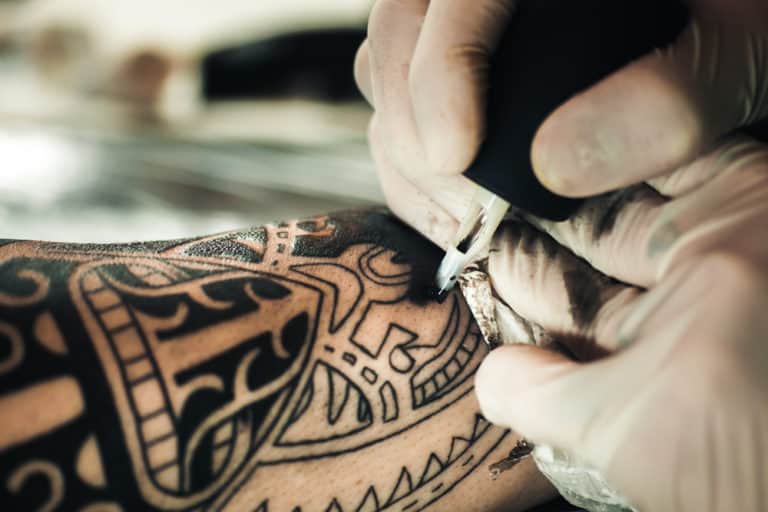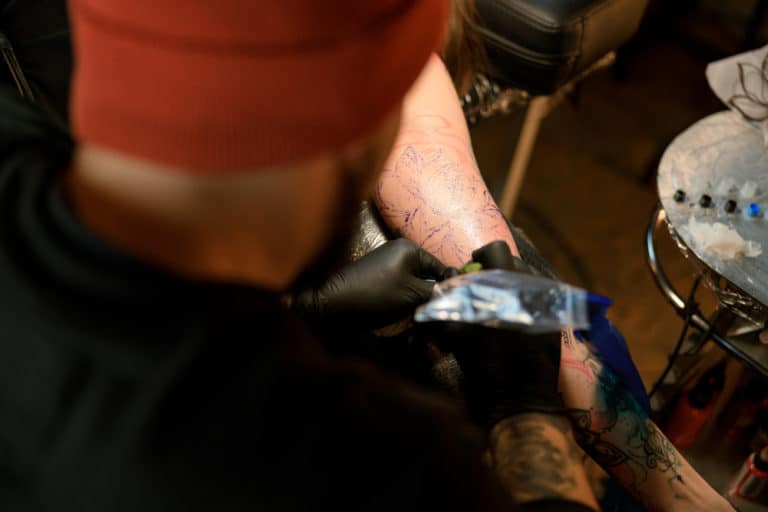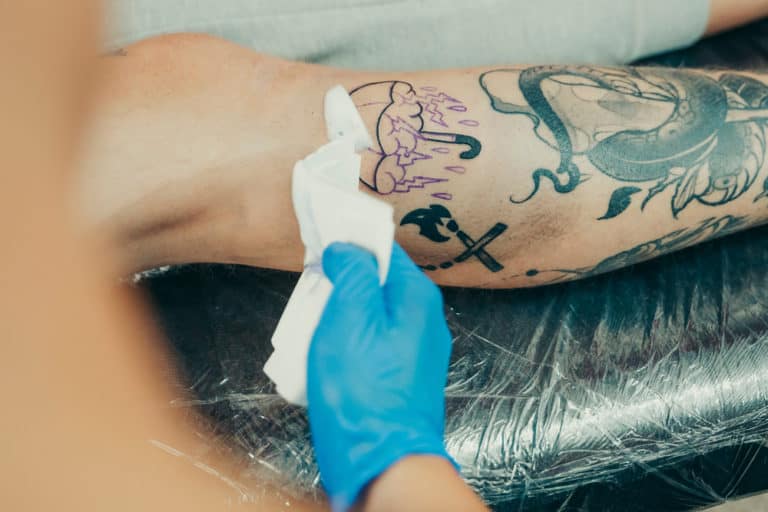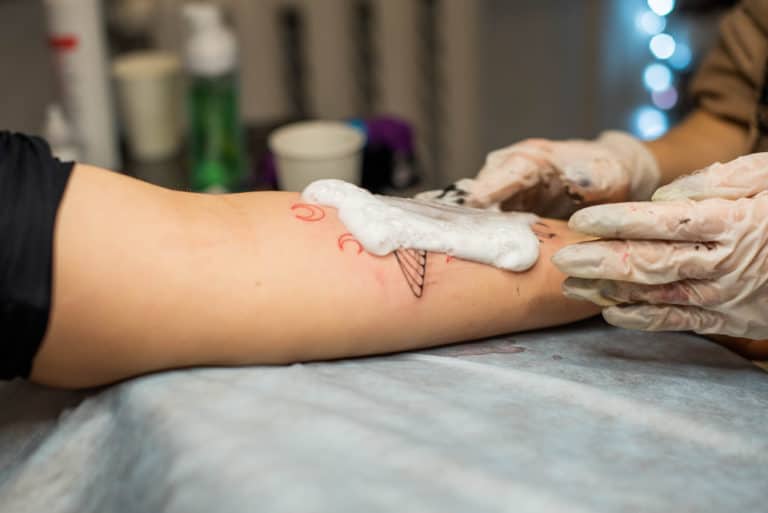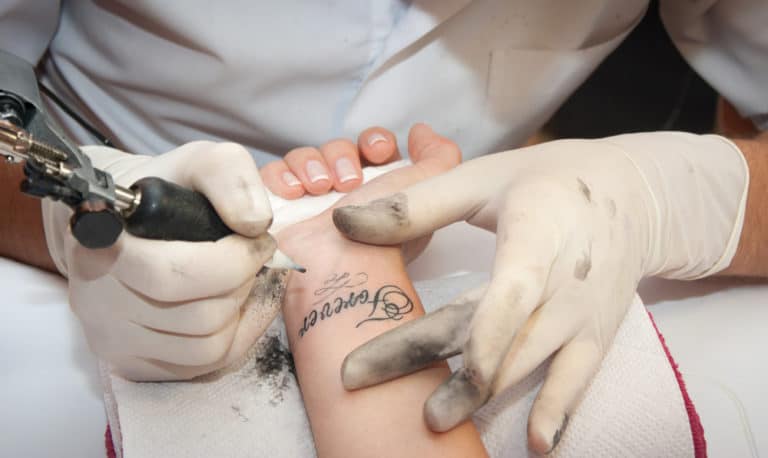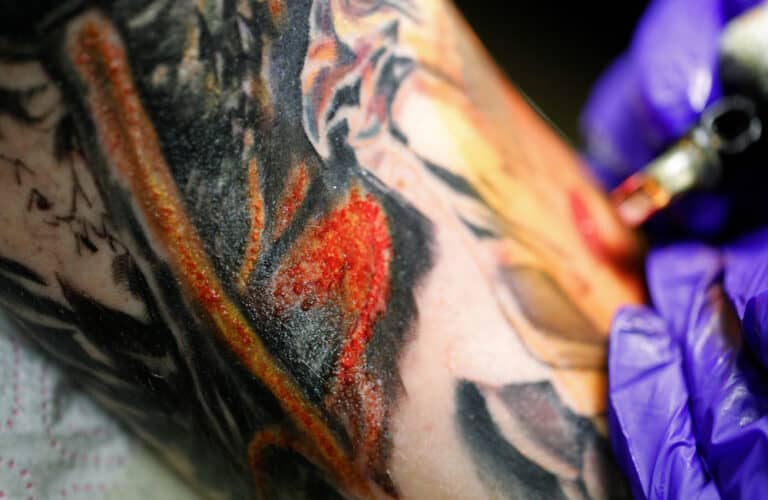How Do You Cover A Tattoo When Swimming?
You got a new tattoo and would like to flaunt it. What better way to do it than at the beach or next to the pool? You heard you should cover it up, but how do you cover a tattoo when swimming?
Avoid swimming with a new tattoo. The risk for infection is too high, but if you have to swim, cover your tattoo with a medically graded waterproof dressing. Remove the bandage when you get out of the pool and wash your tattoo and dry it according to the care instructions from your tattoo artist.
Usually, when you hear the word tattoo and swim in the same sentence, a tattoo artist or doctor will stretch open their eyes and follow that with a NO. These reactions are not to keep you from having fun but for your safety. There are, however, ways to cover your tattoo when you have to get it wet.
Why Cover Your New Tattoo When Swimming?
Tattoo artists and doctors advise that you make sure your tattoo has healed before going for a swim or submerging it in water. The healing process depends on the tattoo size and your obedience to the aftercare instructions from your tattoo artist. Most tattoos take four to six weeks to heal.
An oversized, full-back, or thigh tattoo may take four to five months to heal. The reason for this is that the micro incisions made by the needles cause wounds. Thus, you should see your tattoo as an open wound, which is why keeping seawater or pool water from entering that wound and causing an infection is essential.
The most important reason for keeping your tattoo dry during the healing process is to prevent infections. By keeping the tattoo dry, you will ensure that the exposure to bacteria is as little as possible.
Exposing your wound (tattoo) to bacteria can cause many problems. These include redness, swollen skin, and itchiness, to more extreme cases where it can poison your blood and cause death.
Another apparent reason you want to cover up your newly added artwork is to preserve the ink and ensure it doesn’t fade. During the healing process, a protective layer forms over the ink, keeping it bright and the picture in place. Before the healing process is complete, you risk the ink fading and the picture blurring by drenching it in water.
When your tattoo has healed, the protection of your tattoo is much easier, and you won’t even have to cover it up. Suppose you are a professional swimmer or surfer and cannot help but submerge your new tattoo in water. In that case, you can use one of the following waterproof covers to cover up your tattoo.
- Saniderm is a waterproof dressing you can use to cover your tattoo.
- Waterproof sterile bandages stick to the skin around the tattoo.
Saniderm is a waterproof dressing that a tattoo artist will usually recommend to cover the tattoo. They use the same type to cover your tattoo when you walk out of the shop. This waterproof dressing comes on a roll, the same as clingwrap, and will protect your tattoo from any elements. Be sure to stick it in place with a medically graded adhesive.
Waterproof sterile bandages are clear, come in different sizes, and will keep your tattoo from getting wet or full of sand. These will only work if your tattoo is small to average so that the bandage can cover the whole tattoo and the sticky part stick on the outside of your tattoo.
You may have seen or heard of people covering their tattoos with plastic wrap. Plastic wrapping is a practice that started in the 80s in the motorcycle community. They wrapped their tattoo with bandages and opened and closed the tattoo to show it off. Opening and closing the tattoo was problematic, and someone decided to use saran wrap instead as it is see-through.
Cling wrap is for food, not an open wood like a tattoo. In Hawaii, the regulations are strictly against using any other wraps than medically approved dressing and fastening it with a clinical adhesive. Reputable tattoo studios will never use plastic, as this information is part of their licensing test. The hope for the future is that saran wrap will be banned worldwide.
The plastic is not waterproof; it seals the entire area of the tattoo from the air, causing moisture build-up that makes your tattoo the perfect breeding place for bacteria. The medically graded dressings tattoo artists recommend act as a second skin and are waterproof.
The duration to keep the initial dressing on varies from one tattoo artist to the next. Still, some recommend three days before taking it off. Keeping the initial cover on for a while will help keep it clean from bacteria and water. After removal, the tattoo must stay open to kick-start the healing process.
The importance of waterproofing your tattoo before swimming is to do it immediately before getting in the water. Make sure the tattoo is dry and clean before you cover it. Double-check that the entire tattoo is covered, and no water will be able to enter the dressing.
When you finish swimming, ensure the rest of your body is dry, so no water drips or rolls off your body over the tattoo. Carefully remove the dressing and clean the tattoo with your hand, using water and non-scented soap – the tattoo artist would have shown you this as an aftercare measure. Let it air dry – you don’t want any towel substance to stay behind on your tattoo.
Why Is Sea Water Bad For Your New Tattoo?
Many would think that salt water cannot be too bad for your tattoo, as salt water can clean out wounds. Firstly, you have to understand that your tattoo isn’t a normal wound, and secondly, seawater is not normal salt water.
There are many bacteria in the sea, and swimming between the flags at a beach exposes you to more bacteria from humans. Besides the bacteria in the water, the saltwater could potentially dry the tattooed skin and cause itchiness. Dried-out skin will cause the tattoo to flake prematurely, causing your tattoo to fade or have a blurred look.
Why Is Pool Water Bad For Your New Tattoo?
Regarding pools, most would use the reasoning that chlorine will kill any bacteria in the water, which will make it safe to swim in with your new tattoo. That is far from the truth.
Some pools might have lower chlorine levels, still presenting the possibility of infection because of bacteria. Those pools that are chlorinated enough to kill off bacteria will cause sensitivity to the skin on your tattoo, leading to itchiness, red bumps, and peeling, destroying your results.
How To Cover Your Almost Healed Tattoo In The Shower?
Your tattoo is well on its way to the end of the healing process but not 100% healed, and you should not risk getting it wet. You can use petroleum jelly to cover the tattoo while showering at this stage. Remove the jelly cautiously by washing it off with your hand, water, and antibacterial soap as soon as you finish showering.
Do not, however, use this method when you go swimming. It is not a bulletproof cover-up to prevent infection. Vaseline is also bad because it restricts the crucial airflow during the healing process. It can cause the last bit of flakes to fall off prematurely.
How To Protect Your Healing Tattoo At The Beach
You might have to skip the water for a while, but that doesn’t mean you must avoid the beach altogether. You can follow a few safety measures to protect your tattoo while it heals.
- Keep it dry. The first precaution you must take is to keep it dry and clean. Do not go near the water or walk in the water where you can risk a wave breaking against your new tattoo.
- Tattoo Goo. This Goo is a balm you can use to keep the tattoo hydrated and preserve its color during the healing process. If you apply this before going to the beach, be sure to cover up over it to prevent sand from sticking to the Goo.
- Loose-fitting clothes. Your brand new tattoo is extra sensitive to sunlight and U.V. rays, so cover up with loose-fitting garments and ensure the material doesn’t stick to your tattoo.
- Big umbrella. Covering up with clothes at the beach might sound strange, but if you are unwilling to do so, you will have to keep your tattoo under the shade under an umbrella.
How To Handle Your Healed Tattoo At The Beach Or Pool
If you want your tattoo to stay beautiful and keep the ink well, you will have to protect it from the U.V. rays. The sun can cause your tattoo to fade, so it is crucial to protect it with a waterproof sunblock with a minimum of 30 SPF and apply at least every 2 hours.
It will help if you do not expose your tattoo to the U.V. rays of the sun too much. If you are not swimming, instead cover it up. Covering up will ensure your tattoo keeps looking its best for a long time.
Drink a lot of water to keep your body hydrated. Keeping your body clean from within will glow through your skin, keeping your tattoo bright.
How to Decrease The Healing Time Of A tattoo?
Do you want to get into the water sooner rather than later? Ditch the waterproof coverings and instead focus on the healing of your tattoo. If you implement specific things, you can reduce the healing time and get to swimming in no time.
- Cover your tattoo. Cover your tattoo with loose-fitting clothes. You will keep it from getting damaged getting wet, protecting it from the sun, and keeping it from getting bumped against something.
- Do not dress the tattoo again. After removing the initial dressing, do not wrap it up again. The skin must dry out through the air, flake off and heal.
- Clean your tattoo. Your tattoo artist will show you the delicate way to clean the tattoo without compromising the healing process.
- Apply aftercare balm. The balm will keep it hydrated, secure the ink, and help heal the scar.
- Do not touch your tattoo. It will start to itch and flake. DO NOT scratch or peel off the scrubs. You can ruin your tattoo if these fall off prematurely or get peeled off.
- Do not use any scented products. Only use the products your tattoo artist approved. Usually, it will be unscented with no extra ingredients that will dry out your tattoo or cause infections.
- Keep your tattoo dry. If you keep it dry, the healing process can continue as fast as possible, and you can get to everyday living quicker.
What If I Get My Tattoo Submerged In Water?
If you get your tattoo wet, it is not the end of the world. Ensure you clean it with the antibacterial soap your tattoo artist prescribed and tap dry with a paper cloth or, better yet, air-dry it. But if you keep submerging it, you will have to live with the consequences that your tattoo might not come out as you had hoped.
What To Do If I Get An Infection At Tattoo Area?
You will need to see a doctor straight away. They have to ensure the infection hasn’t spread to your bloodstream. They will give you antibiotics that you have to complete. Keep following the aftercare instruction to a T, and you can take anti-inflammatory medicine to help with the pain and swelling. Ask your doctor which anti-inflammatory ones you can take and how often.
How Do I Know My Tattoo Isn’t Healing Correctly?
You will experience symptoms if your tattoo isn’t healing correctly and might be infected. These include fever, redness that doesn’t go away, fluids oozing from the tattoo, swollen skin, unbearable itchiness, or scarring that doesn’t compare to what the tattoo artist described. If these signs are present, visit your doctor as soon as possible.
Conclusion
Getting a tattoo is a serious decision, one you make for life. The least you can do is to stick to the aftercare instructions for the given timeframe while the healing process leads its course. Soon you will be flaunting your new ink; be patient.
Some of my favorite designs, tattoo books, and aftercare products, selected for you
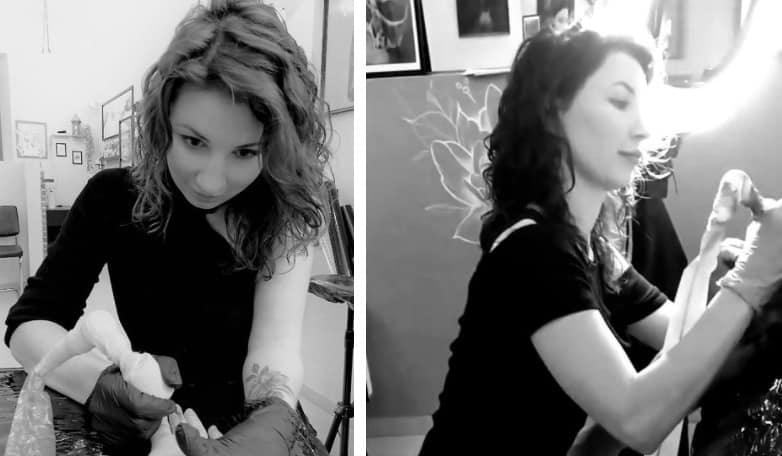
Thank you for reading my article, I hope that you have found it helpful. If you would have trouble finding ideas for your tattoo, wonder what is meaning of design that you have found or what to buy for aftercare, to make sure that your tattoo will be healing quickly and easily, here are some of my favorite products in one place, hope that this will also help.
Design and tattoo ideas
For some ideas you can have a look at those 3 books with hundreds of designs that I use with my clients, they are available on Amazon for Kindle or in classic, paper version (links below):
- Great Book of Tattoo Designs, Revised Edition: More than 500 Body Art Designs (Fox Chapel Publishing) Fantasy, Celtic, Floral, Wildlife, and Symbol Designs for the Skin by Lora Irish
- The Big Book of Small Tattoos – Vol.1: 400 small original tattoos for women and men by Roberto Gemori
- Tiny Tattoos: Over 1,000 Small Inspirational Artworks by Rebecca Vincent.
Tattoo meaning
If you would like to read more about the meaning of different tattoo styles and designs before you will decide what you would like to have, I can recommend a book that was really useful for me when I was starting my tattoo adventure – it’s “Conscious Ink: The Hidden Meaning of Tattoos” by Lisa Barretta (through the link you can find it on Amazon for around $10).
Tattoo aftercare
The skin at the tattoo site often dries out. To prevent it and speed up healing for my clients, I usually recommend one of those tattoo aftercare balms (you can find them on Amazon):


